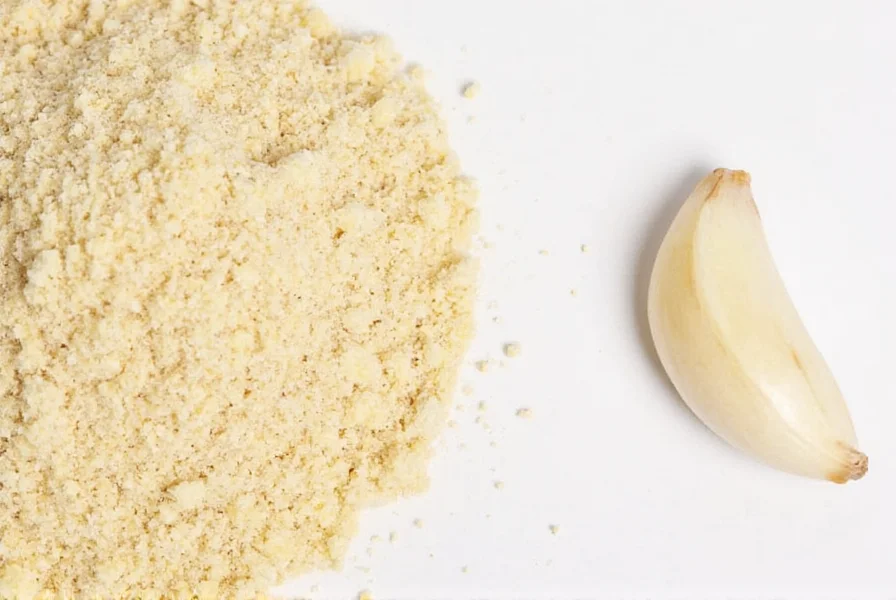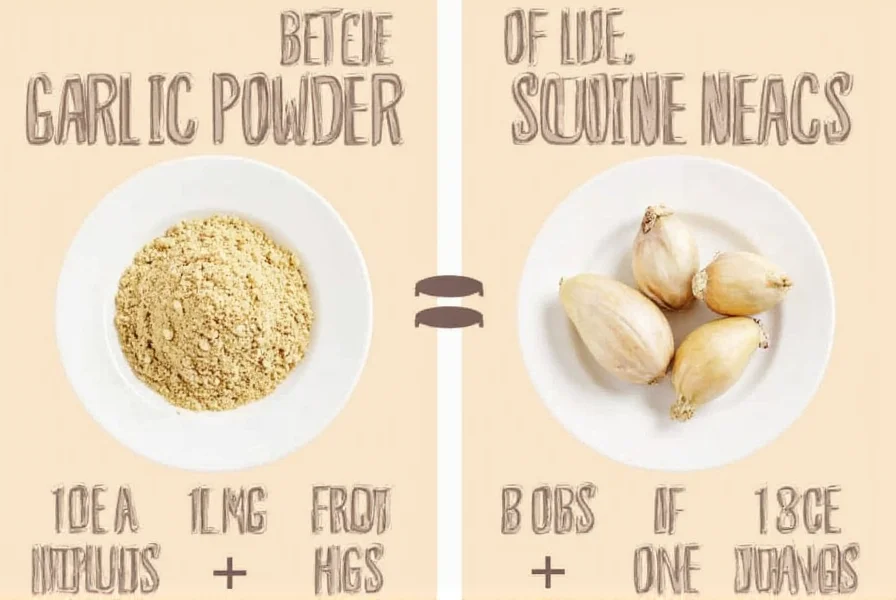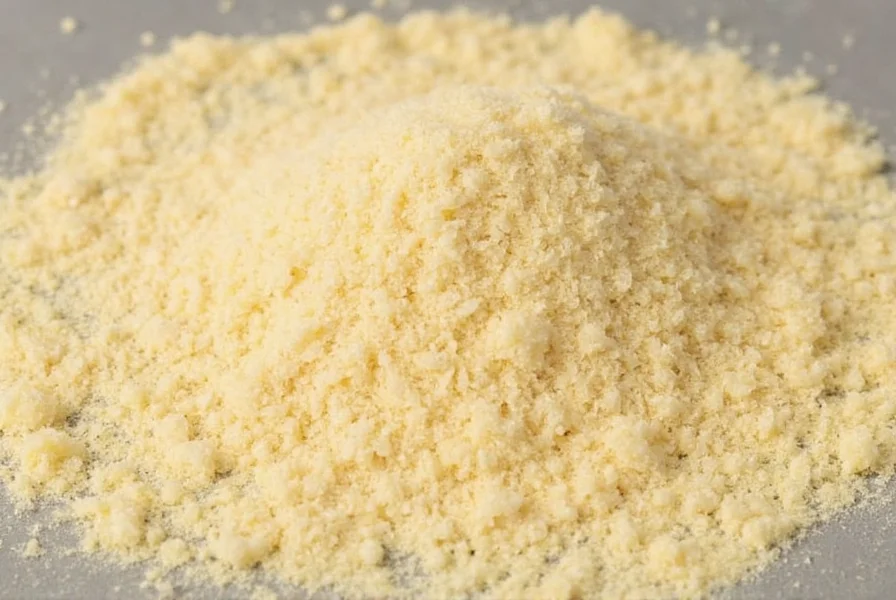Understanding garlic measurements is essential for achieving perfect flavor balance in your cooking. When a recipe calls for fresh garlic but you only have garlic powder on hand, knowing the precise conversion ratio prevents under-seasoning or overpowering your dish. The 1:1/8 ratio (one clove to 1/8 teaspoon) serves as the culinary standard for most applications, from sauces and marinades to baked goods and dressings.
Why the 1:1/8 Ratio Works Best
Garlic powder concentrates the flavor of fresh garlic through dehydration. During this process, moisture evaporates while flavor compounds intensify. One medium-sized fresh garlic clove (approximately 5 grams) yields about 1/8 teaspoon of garlic powder when dehydrated and ground. This concentration factor explains why you need significantly less powder than fresh garlic.
Professional chefs and food scientists confirm this ratio through extensive testing. The National Center for Home Food Preservation notes that dehydrating garlic concentrates its flavor compounds by approximately 8-10 times, making the 1/8 teaspoon measurement scientifically sound for substitution purposes.
Factors That Affect Garlic Powder Conversion
While the 1:1/8 ratio works for most situations, several variables can influence your substitution:
- Garlic powder quality - Freshly ground powder from dehydrated garlic cloves provides stronger flavor than older, commercially processed powder
- Recipe moisture content - In wetter recipes like soups and stews, you might need slightly more powder as flavor disperses in liquid
- Dish cooking time - Long-simmered dishes may require less powder as flavors concentrate during cooking
- Personal taste preferences - Some palates detect garlic more sensitively than others
| Number of Fresh Garlic Cloves | Equivalent Garlic Powder | Best For |
|---|---|---|
| 1 clove | 1/8 teaspoon | Salad dressings, light sauces |
| 2-3 cloves | 1/4 teaspoon | Stir-fries, roasted vegetables |
| 4-6 cloves | 1/2 teaspoon | Marinades, meat rubs |
| 8-10 cloves | 1 teaspoon | Hearty stews, tomato sauces |
When to Adjust the Standard Conversion
Certain cooking scenarios warrant tweaking the standard garlic powder to fresh garlic conversion. For delicate dishes like fish or light pasta sauces, consider using 1/16 teaspoon per clove to prevent overpowering subtle flavors. Conversely, for robust recipes like chili or barbecue sauce, you might increase to 3/16 teaspoon per clove for more pronounced garlic notes.
Remember that garlic powder lacks the sharp, pungent bite of fresh garlic. If your recipe specifically relies on that characteristic fresh garlic zing (like in aioli or pesto), consider adding a tiny pinch of onion powder or a drop of lemon juice to mimic some of that brightness when using powder.
Proper Storage for Maximum Flavor

Garlic powder's potency diminishes over time, directly affecting your conversion accuracy. Store your garlic powder in an airtight container away from light and heat. Properly stored, it maintains peak flavor for 6-12 months. After this period, you may need to increase the amount slightly to achieve the same flavor intensity.
Check your garlic powder's freshness by rubbing a small amount between your fingers. If you can't detect a strong garlic aroma, it's lost potency and will require more generous measurements to compensate.
Common Substitution Mistakes to Avoid
Many home cooks make critical errors when substituting garlic powder for fresh garlic. The most frequent mistake is using equal measurements (1 clove = 1 teaspoon), which creates overwhelmingly strong garlic flavor. Another common error is not accounting for the salt often added to commercial garlic powder—check your container's ingredients list before seasoning further.
For the most accurate results, measure garlic powder with proper measuring spoons rather than estimating. The difference between 1/8 and 1/4 teaspoon significantly impacts your dish's final flavor profile.
Creating Your Own Garlic Powder

For superior flavor control, consider making your own garlic powder. Thinly slice fresh garlic cloves and dehydrate at 135°F (57°C) for 6-8 hours until completely brittle. Grind in a spice grinder until powdery. Homemade powder typically has stronger flavor than store-bought, so start with 1/16 teaspoon per clove and adjust to taste.
This DIY approach eliminates additives found in commercial products and provides noticeably fresher flavor. Store your homemade powder in a dark glass jar for maximum shelf life.
Final Conversion Tips for Perfect Results
Mastering the garlic powder to fresh garlic conversion transforms your cooking consistency. Always start with the standard 1/8 teaspoon per clove ratio, then adjust based on your specific recipe and taste preferences. Add powder gradually, allowing flavors to meld for several minutes before deciding if more is needed.
For baking applications where precise measurements matter most, stick strictly to the 1:1/8 ratio. In savory cooking, feel free to experiment within the 1/16 to 3/16 teaspoon range per clove to match your personal flavor preferences. Remember that garlic flavor intensifies as dishes cook, so it's better to start with less and add more if needed.
Can I use garlic powder instead of fresh garlic in all recipes?
While garlic powder works in most cooked dishes, it's not ideal for recipes relying on fresh garlic's texture or sharp bite, such as aioli, pesto, or raw garlic applications. For cooked dishes like soups, stews, and roasted vegetables, garlic powder makes an excellent substitute using the 1:1/8 conversion ratio.
Does the size of the garlic clove affect the conversion?
Yes, clove size matters. The standard 1/8 teaspoon conversion assumes a medium-sized clove (about 5 grams). For small cloves, use 1/16 teaspoon; for large cloves, use 3/16 teaspoon. When recipes specify "large" or "small" cloves, adjust accordingly for best results.
How does garlic powder compare nutritionally to fresh garlic?
Garlic powder retains most of fresh garlic's nutritional benefits but with some differences. The dehydration process concentrates certain compounds while reducing others. Both forms contain allicin (garlic's active compound), though fresh garlic generally has higher levels. Powdered garlic offers more consistent measurements and longer shelf life while providing similar health benefits.
What's the best way to measure small amounts of garlic powder accurately?
Use proper measuring spoons rather than estimating. For 1/8 teaspoon measurements, fill your 1/4 teaspoon measure halfway. For even smaller amounts, use a toothpick to remove excess powder until you reach the desired quantity. Level off the top with a straight edge for precise measurement.
Can I substitute fresh garlic for garlic powder in a recipe?
Yes, but the conversion works in reverse. One 1/8 teaspoon of garlic powder equals one fresh garlic clove. So if your recipe calls for 1 teaspoon of garlic powder, you would need 8 fresh garlic cloves. Remember that fresh garlic provides different texture and a sharper flavor profile than powder.











 浙公网安备
33010002000092号
浙公网安备
33010002000092号 浙B2-20120091-4
浙B2-20120091-4